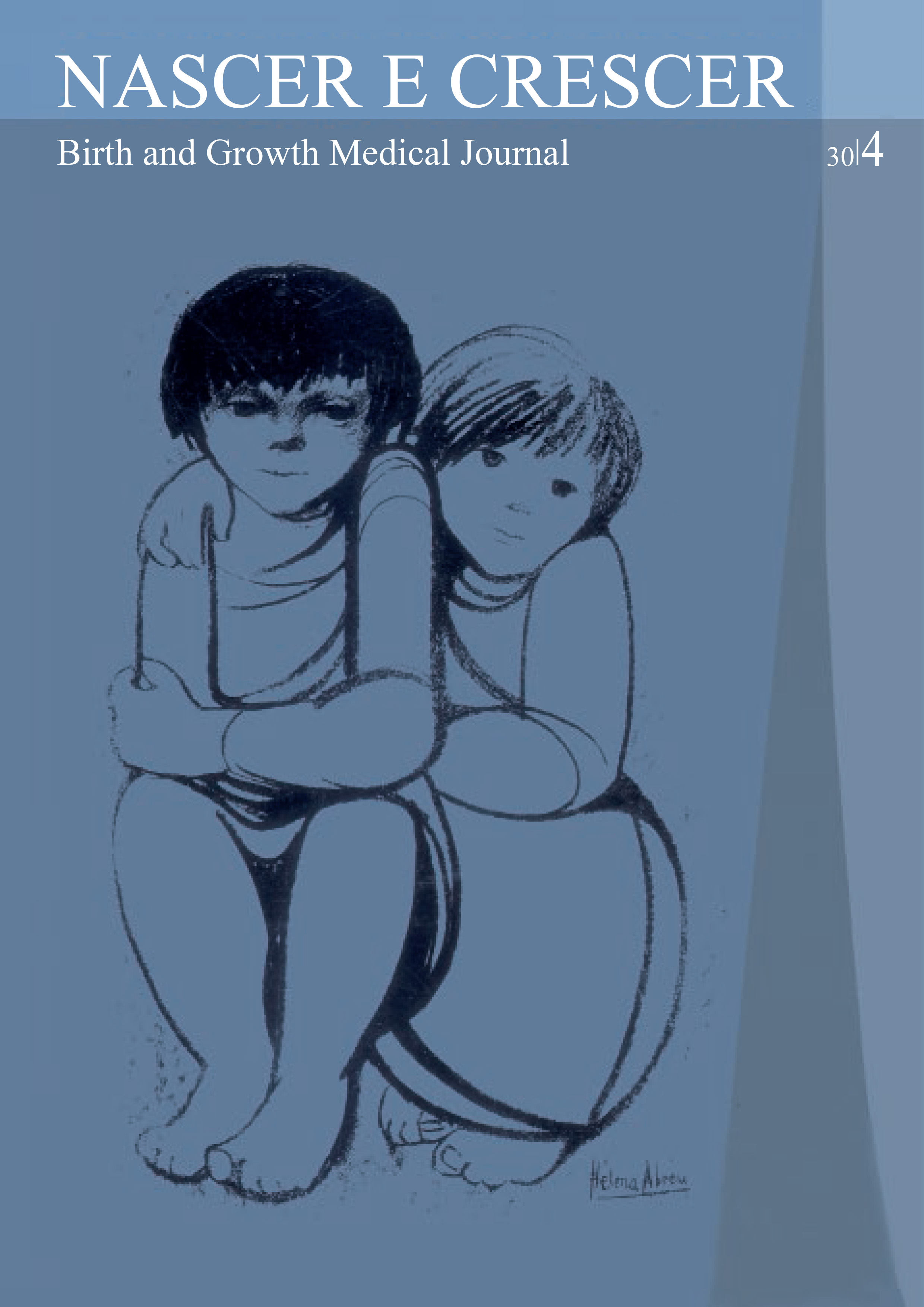Biochemical clinical case
DOI:
https://doi.org/10.25753/BirthGrowthMJ.v30.i4.20060Keywords:
blood protein disorder, electrophoresis, serum albuminAbstract
Bisalbuminemia is a qualitative albumin variation defined by coexistence of two types of serum albumin with different electrophoretic mobilities in the same individual. It can be of two different types: hereditary (or permanent) and acquired (or transient).
Herein is described a rare case of hereditary bisalbuminemia in a healthy infant, incidentally found during elevated aminotransferase study.
Despite not having pathological significance, acknowledgement of this analytical alteration is key for adequate management of these patients.
Downloads
References
Neild GH, Chakraborty S, Sural S, Sen S. Serum electrophoresis with a bifid albumin peak. Clin Kidney J. 2012;5(6):607.
Agarwal P, Parkash A, Tejwani N, Mehta A. Bisalbuminemia: A Rare Finding on Serum Electrophoresis. Indian J Hematol Blood Transfus. 2018;34(3):558-9.
Angouridaki C, Papageorgiou V, Tsavdaridou V, Giannousis M, Alexiou-Daniel S. Detection of hereditary bisalbuminemia in a Greek family by capillary zone electrophoresis. Hippokratia. 2008;12(2):119-21.
Bach-Ngohou K, Schmitt S, Le Carrer D, Masson D, Denis M. [Dysalbuminemia]. Ann Biol Clin (Paris). 2005;63(2):127-34.
Shetty JK, Maradi R, Prabhu K, Bhat G. Bisalbuminemia in a Hypothyroid Patient with Diabetes: A Case Report. J Clin Diagn Res. 2015;9(9):BD01-02.
Lefrere B, Dedome E, Garcia-Hejl C, Ragot C, Chianea D, Delacour H, et al. [Bisalbuminemia: A case report]. Rev Med Interne. 2018;39(12):950-4.
Sunthornthepvarakul T, Likitmaskul S, Ngowngarmratana S, et al. Familial dysalbuminemic hypertriiodothyroninemia: a new, dominantly inherited albumin defect. J Clin Endocrinol Metab. 1998;83(5):1448-54.
Petersen CE, Scottolini AG, Cody LR, Mandel M, Reimer N, Bhagavan NV. A point mutation in the human serum albumin gene results in familial dysalbuminaemic hyperthyroxinaemia. J Med Genet. 1994;31(5):355-9.
Faviou E, Nounopoulos C, Dionyssiou-Asteriou A. Bisalbuminemia from a clinical chemist’s viewpoint: a case report and review of the recent literature. Minerva Med. 2006;97(3):287-93.
Kragh-Hansen U, Minchiotti L, Galliano M, Peters T, Jr. Human serum albumin isoforms: genetic and molecular aspects and functional consequences. Biochim Biophys Acta. 2013;1830(12):5405-17.
Downloads
Published
How to Cite
Issue
Section
License
Copyright (c) 2021 Joana Vanessa Silva, Joana Ferreira, Mariana Silva, Miguel Costa

This work is licensed under a Creative Commons Attribution-NonCommercial 4.0 International License.
Copyright and Authors' Rights
All articles published in Nascer e Crescer - Birth and Growth Medical Journal are Open Access and comply with the requirements of funding agencies or academic institutions. For use by third parties, Nascer e Crescer - Birth and Growth Medical Journal adheres to the terms of the Creative Commons License "Attribution - Non-Commercial Use (CC-BY-NC)".
It is the author's responsibility to obtain permission to reproduce figures, tables, etc. from other publications.
Authors must submit a Conflict of Interest statement and an Authorship Form with the submission of the article. An e-mail will be sent to the corresponding author confirming receipt of the manuscript.
Authors are permitted to make their articles available in repositories at their home institutions, provided that they always indicate where the articles were published and adhere to the terms of the Creative Commons license.


